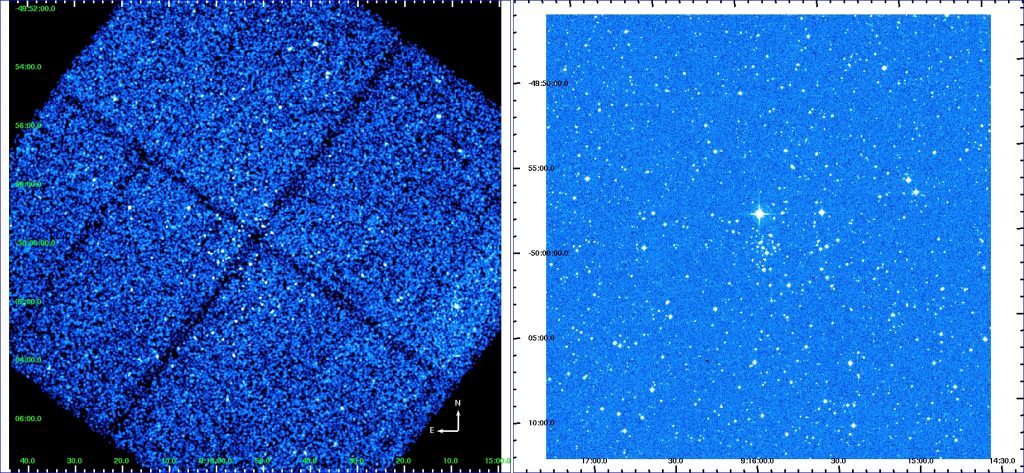Scientific Projects
• Star formation in the proximity of Blue-Hypergiant stars: Pismis 11
Massive stars affect star formation and disks evolution, as explained here.
These effects can be tested directly in clusters hosting a large sample of massive stars, or in environment dominated by a few very massive stars. A template of the latter environment is the cluster Pismis 11. In fact, it host one of the brightest stars known in the Milky Way: the blue-hypergiant HD 80077. This star is currently a B2I star, emitting between one and two orders of magnitude more ionizing flux than O stars.
Pismis 11 is thus a unique target to test the evolution of disks and star formation in presence of massive stars. To study this important target, I have obtained a 100 ksec Chandra/ACIS-I observation and a NASA grant of 49000$. The objective of the project is to obtain a census of candidate members down to one solar mass, both with and without disks, estimate their stellar properties using available photometry and understand whether disks dissipation timescale and the cluster stellar content are affected by HD 80077.
Scientific Products:
data analysis ongoing

